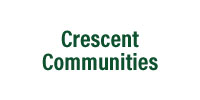Your future leaders are coming into view! Candidate filing for elected office opened at noon on Monday, December 4th and remains so until noon on Friday, December 15th. Candidates who decide to run will be competing in 2024 contests for positions from County Commissioner, to State Legislator, U.S. Congress, and all the way up to U.S. President. Click the links below to see who has filed so far and begin to familiarize yourself with the candidates:
Mecklenburg County Board of Elections - Candidate List
Iredell County Board of Elections - Candidate List
Cabarrus Board of Elections - Candidate List
Gaston County Board of Elections - Candidate List
Union County Board of Elections - Candidate List
Originally published on December 5, 2023 Doug Faron for NAIOP.
In today’s environment, there are countless barriers to new commercial real estate development opportunities, including rapidly rising borrowing rates, increased constraints on banks, growing insurance costs and geopolitical risks, to name a few. On top of that, a major constraint to development today is the rising cost of construction. The upward trajectory of construction spending itself can be attributed to many factors including inflation, labor costs, rising insurance rates, materials and even permitting costs. As the cost to build becomes more expensive, developers are grappling with how to deliver high-quality buildings on time and within budget.
As a result, to achieve deadlines and stay within budget, developers must generate solutions to the industry dilemma of rising construction costs. In this article, we will dive into what’s driving construction spending, how these costs are impacting developers and solutions for maintaining development momentum.
Read More
Originally published on December 6, 2023 Eric Schmutz for NAIOP.
For the first December in recent years, Congress is no longer facing a government shutdown deadline. Prior to the Thanksgiving recess, Congress approved a two-tiered appropriations package. This “laddered” approach primarily funds domestic programs (such as housing, agriculture, transportation and infrastructure) until Jan. 19, 2024, and the remaining programs, including defense and homeland security, until Feb. 2, 2024. Year-end 2023 is not without its share of must-pass legislation, however.
Before Congress adjourns for the holidays, House Speaker Mike Johnson (R-LA) must convince his conference to approve the $886 billion National Defense Authorization Act, reauthorizing legislation for the Federal Aviation Administration (FAA), and Section 702 of the Foreign Intelligence Surveillance Act (FISA). In addition, the House must reach an agreement with the Senate and President Joe Biden on aid packages for Ukraine, Israel and Taiwan that House and Senate Republicans say must include border security funding. With six legislative days left on the schedule, the House appears to be adding to their busy schedule by approving impeachment inquiries for Biden and Homeland Security Secretary Alejandro Mayorkas.
Adding to Johnson’s challenges, the House voted 311-114 last week to expel Representative George Santos (R-NY), making him the sixth member in history to be expelled from Congress and shrinking the already narrow and fractured Republican majority in the body.
Read More
Originally published on November 20, 2023 by J. Byron Brazier for NAIOP.
When you travel to a different country, you expect to encounter a different landscape, culture and customs. But in many parts of the U.S., communities mere blocks or miles apart feel like wholly distinct worlds. Take Chicago: Its beautiful architecture and stunning lakeshore belie the staggering economic disparities among neighborhoods and real estate developments.
In Lincoln Park, a community on Chicago’s North Side, the median income is $123,044 and 85.6% of residents have a bachelor’s or graduate degree. Nearly 80% of Lincoln Park’s residents are white. Ten miles south, in the Woodlawn community, the median income is $28,794 and 26.1% of residents have a bachelor’s or higher degree. Eighty percent of Woodlawn’s residents are Black.
Drive through Lincoln Park and you’ll see high-end workout facilities, a range of shops and restaurants and an enormous Whole Foods. Drive through Woodlawn and you’ll spy far fewer amenities. Of these two communities, you can probably guess which has enjoyed large-scale, sustained investment and which has experienced underinvestment and systemic inequities.
Read More
The NAIOP Research Foundation has published the NAIOP Office Space Demand Forecast for Q4 2023.
Key Takeaways:
- The office market continues to face stiff headwinds as office utilization has remained relatively flat over the last year, as evidenced by mobile phone location data and building-access records.
- The U.S. economy has defied many economists’ forecasts for a recession in 2023, but office-using employment growth has stalled. Nonetheless, with a recession now appearing less likely, employment growth should continue next year, and firms may be more willing to commit to leasing space than they have been in 2023.
- As office leases expire, tenants are trading space for quality, leasing smaller spaces in newer buildings with modern amenities to draw workers to the office.
- By contrast, the largest increases in vacancies since 2020 have been concentrated in a small proportion of the most functionally obsolete office buildings, which tend to be poorly located and poorly amenitized. Few of these buildings appear likely to remain in use as offices, barring significant renovation.
- New construction has slowed, but given the lag between starting construction and delivering new office space, projects begun in earlier years continue to reach the market, with 17.1 million square feet delivered over the last two quarters. Combined with negative 12.3 million square feet of net absorption over the last two quarters, these completions have contributed to a rising national average vacancy rate, which reached 18.4% in the third quarter, the highest rate since 1992.
Given these trends, net office space absorption in 2024 is expected to be 5.7 million square feet. Moving forward, the forecast projects that net absorption will total approximately 4.5 million square feet during the first three quarters of 2025.
View Report
Originally published on November 27, 2023, by WDG for NAIOP.
Adaptive reuse architecture presents a creative and specialized challenge. The prevailing trend is to convert vacant office buildings into multifamily residential or hospitality properties. These designs are a purposeful, more sustainable solution that provides vibrancy to obsolete, underutilized and often vacant buildings. Converting unused offices to another occupancy can address housing supply shortages and help bring back commercial business districts. The improved functional spaces increase the tax base for taxpayer and municipality benefits. The properties utilize the existing public infrastructure, roadways, transportation network options and utility connections for the rapid reconnection of an existing community. Understanding basic concepts of conversions is critically important for development professionals, city officials and local communities. Each potential property needs to be evaluated on its own merits to determine the probability of success, and whether the location, costs, timing and existing building layout make sense for a conversion.
Read More

Charlotte Douglas International Airport is braced for the impact of more than 900,000 travelers over Thanksgiving. To put that into context, it's nearly the population of the entire City of Charlotte. Here are a few more interesting facts:
- Terminal opened May 2, 1982
- 118,000 daily passengers
- 21,000 parking spaces
- 6,000 acres of land
- 2022 stats - 47,758,605 passengers, 505,589 arrivals & departures, 207,608 tons of cargo
- 179 nonstop destinations
- 36 international destinations
For an interesting discussion about the airport as well as the activities of American Airlines, please take a few minutes to listen to the REBIC podcast with Tracy Montross, Regional Director of Government Affairs for American Airlines.
Listen Now

Originally published on November 20, 2023, by Rob Nanfelt for REBIC.
A coin toss is a reasonable way to determine who will receive first possession of the ball in overtime during a football game. It’s been the standard and accepted practice for years at every level of the sport. Now we’re learning that the outcome of elections can be determined in a similar manner. The outcome means someone wins and someone loses. But our low voter turnout this season means we are all losing!
Read More
Originally published on November 13, 2023, by Rick Scardino for NAIOP.
As a retail real estate specialist for more than three decades, I’ve seen many trends come and go. One day, it’s an explosion in the sale of bank pads. And now, I’m seeing that niche real estate investors – who historically operate with a bit of herd mentality – have crowned the car wash industry the latest investment darling. The evolution of the car wash industry and the resulting uptick in interest from investors, developers and operators alike has been fascinating to watch. Brands like Take Five, Waterway, Zips, Spotless and Mister Car Wash are just a few of the modern success stories bringing car wash investment into the headlines. So, what’s with the hype?
EXPERIENCE DRIVES CHANGE
The evolution of the car wash industry forms an intriguing narrative. From its origins to the present day, consumer preferences, technological advancements and environmental considerations have been the catalyst for change as the new-age car wash emerges at a rapid pace.
The primary car wash categories are 1) In-bay Automatic/Roll-over; 2) Self-Service; and 3) Conveyor. According to Grand View Research Inc., conveyor car washes are consistently the most profitable in the car wash sector in the U.S., where more than 72% of drivers use professional car wash services an average of 13 times per year. While the self-service wash still exists, it is becoming rarer as a better experience for slightly more money is likely available just down the street.
Read More
Interstate Movers Find Better Real Estate Options in the Mountain West and New England
Originally published on November 9, 2023, by Francis Chantree for NAIOP.
More and more Americans are moving to a different state, often to one inland and less densely populated but with great real estate options. The highest net migration is seen in Idaho, Montana and Vermont, plus Maine and other states offering plenty of space and housing, a trend that fuels the local real estate sectors.
A record 7.9 million Americans swapped states in 2021, 5.8% more than in the year before, and 2022 saw a further increase. By contrast, relocating within the same state decreased year-over-year by 7.7% in 2021. A recent StorageCafe study ranked states by net migration figures, analyzing the number of people arriving minus those leaving for every 1,000 residents.
New England and the Mountain West region are joined in popularity by states ranging from South Carolina to Nevada. Many relocate from often-expensive places like California or New York; better housing costs and availability – boosted wherever there is generous self-storage provision – are key drivers of interstate migration. Many people on the move don’t necessarily give up good salaries, not least because the enduring work-from-home trend can make anywhere in the country an option.
Read More
Originally published on November 1, 2023, by Eric Schmutz for NAIOP.
Following three weeks of negotiations and squabbling, House Republicans elected Louisiana Representative Mike Johnson to serve as the 56th Speaker of the House. Unlike his predecessor, Kevin McCarthy (R-CA), who went 15 rounds before becoming speaker in January, Johnson was the first Republican to receive unanimous support from all Republicans voting, prevailing over House Minority Leader Hakeem Jeffries (D-NY) in a 220 to 209 vote.
This was a difficult time for House Republicans, who struggled to find a new speaker after eight of their members joined all House Democrats to abruptly oust McCarthy on Oct. 3. During the ensuing chaos, House Republicans nominated three candidates for speaker — Majority Leader Steve Scalise (LA), Judiciary Committee Chairman Jim Jordan (OH) and Republican Whip Tom Emmer (MN) — but all three failed to achieve the 217 votes needed to win the speaker’s gavel.
Johnson was first elected to Congress in 2016 after two years as a state representative. He represents the 4th Congressional District of Louisiana which includes 16 parishes (counties) in the northwest and western regions of the state. He is a 1995 graduate of Louisiana State University (LSU), earning a bachelor’s degree in business administration, and a 1998 graduate of LSU Law School. Johnson was born and raised in the Shreveport-Bossier area of Louisiana and still lives there today with his wife and children.
Read More
Originally published on October 25, 2023 by Brielle Scott for NAIOP.
Geopolitical strategist Peter Zeihan combines an expert understanding of demography, economics, energy, politics, technology and security to help clients best prepare for an uncertain future. At NAIOP’s CRE.Converge last week in Seattle, attendees had an opportunity to hear from him at the closing keynote.
Zeihan covered everything from Stalin to NAFTA to the best time to buy a BMW. Here are just a few takeaways from his talk.
U.S. DEMOGRAPHIC SHIFTS AND THE LABOR FORCE
“What we’re seeing is a significant relocation of people – the biggest since the 1950s,” Zeihan said. People are moving to an arc of cities from roughly Salt Lake City down the Front Range into Texas, back up through the South to around Richmond. “That ‘U’ is seeing a fairly strong internal population migration. Everyone else is seeing a decline.” Which generations are moving? Those who have money to spend (Boomers) and families to raise (millennials).
Read More
Originally published on October 19, 2023, by Victor Whitman.
Mass timber has a bright future within commercial real estate development but there are special hurdles that developers and builders must learn about and overcome, according to commercial real estate experts at NAIOP’s CRE.Converge in Seattle.
Mass timber is an engineered wood product typically made of large panels or beams that are manufactured off-site. The products are engineered to bear weight like steel or concrete but are of lighter weight. Because it is lighter and prefabricated, it can cut down on construction times and also reduce labor costs. The product is also considered more environmentally friendly.
“We’re still in this growth stage where we’re figuring out what products are moving toward standardization, which will make the building system more mainstream,” said mass timber consultant Erica Spiritos, owner, Erica Spiritos LLC, moderator of the panel discussion. Panelists included Robert Gerard, PE, senior discipline engineer, Coffman Engineers of San Diego; Seattle developer and now consultant A-P Hurd, president, SkipStone; and Dean Lewis, director of mass timber and prefabrication, Skanska USA Building, Inc., in Seattle.
Read More
Originally published on October 23, 2023, by Pamela Jew for NAIOP.
High interest rates combined with persistent inflation have created the toughest commercial real estate financing environment since the Global Financial Crisis. Post-pandemic vacancies in commercial real estate and shifts to digital retail and work have added more considerations for prospective buyers and sellers.
At NAIOP’s CRE.Converge conference this week, experts discussed the current landscape of commercial real estate loans throughout different sectors, such as multifamily, retail and office spaces. Edward Griffin, CEO, Griffin Partners, Inc., moderated a conversation with Keith Honig, senior managing director and head of commercial mortgage Lending, Pacific Life Insurance Company; and Al Pontius, national director, office & industrial division, Marcus & Millichap.
To help illustrate the data, the speakers came equipped with charts to visualize the data from the past few years and the trends across industries and companies.
Read More
Originally published on October 19, 2023, by Kathryn Hamilton, CAE for NAIOP.
Amazon’s real estate strategies have stretched and been reshaped over the last decade as the company – like every retailer – strives to expand its reach and get closer to the consumer. The largest developer of industrial real estate in the world, the company has always leaned into the innovation and partnerships that fuel its corporate culture and deepen its impact.
At NAIOP’s CRE.Converge conference this week in Seattle, Amazon Vice President for Worldwide Real Estate Daniel Mallory sat down for an in-depth chat in front of an audience of 1,500 commercial real estate leaders. Jean Kane, former CEO of Colliers International-Minneapolis St. Paul and the incoming chair of the NAIOP Research Foundation asked Mallory about his perspectives on everything from the company’s sustainability efforts to today’s market challenges to future workforces and beyond.
Read More
Originally published on October 19, 2023, by Brielle Scott for NAIOP.
There are myriad key considerations involved in developing a successful, comprehensive ESG strategy, including meeting evolving investor and tenant demands, global drivers for ESG performance and expectations, the most pressing climate risks and their financial implications, emerging regulatory guidelines, green financing options, and more.
A panel at CRE.Converge this week moderated by Breana Wheeler, director of operations – U.S., BREEAM USA, discussed overarching ESG trends that are increasingly impacting building operations and development. Panelists included Heidi Creighton, FAIA, vice president, sustainability, Skanska USA Commercial Development; Anita Jeerage, LEED AP BD+C, WELL AP, vice president, sustainability and ESG, Unico Properties LLC; Daren Moss, principal, ESG – real estate lead, Ares Management; and Katie Zilka Hanson, vice president, client success, RE Tech Advisors.
Wheeler kicked off the conversation with a question to the panelists: What are the key drivers behind ESG initiatives today?
Read More
Originally published on October 20, 2023, by Pamela Jew for NAIOP.
With ChatGPT suddenly mainstream, artificial intelligence has become a hot topic with the ability to disrupt any and every industry it touches. The commercial real estate industry is not excluded from this disruption, but the implementation of AI in the space leaves a lot yet to be discovered.
At NAIOP’s CRE.Converge conference this week, industry professionals discussed how AI is evolving and how it can change the commercial real estate industry. Ajey Kaushal, senior investment associate, JLL Spark Global Ventures led a conversation with Todd Huebsch, vice president, Yardi Systems Inc., David Knight, chief architect, Dealpath, and Olivier Maene, global product director, Avison Young.
To begin, each panelist provided an overview of how their respective companies deploy AI. Huebech presented different AI solutions from Yardi, the largest software developer specializing in real estate, that it has already rolled out in 2023: chatbots, work orders, smart key and an assistant. Knight said Dealpath is questioning how much agency we give AI, and that the software company still believes in human decision-making for key decisions.
Read More
Originally published on October 20, 2023, by Logan Nagel for NAIOP.
Low occupancy across the office sector as well as high demand for housing has many real estate development professionals asking whether adaptive reuse of commercial buildings may be an option to add supply during the housing crisis. A NAIOP CRE.Converge conference panel in Seattle this week investigated that very question, focusing on a successful conversion case study in Alexandria, Virginia, as well as exploring what it takes to get conversion projects across the finish line.
Completed in 2020, The Foundry transformed an underutilized federal office building into a mixed-use residential property. It sold in 2021 for $262 million, after the developer paid $50 million for the property and $150 million in construction, design, and carrying cost. The sale was CoStar’s 2021 Deal of the Year. Office conversions give developers a number of benefits: they can provide opportunities in attractive markets with limited available open space while saving time and money compared to ground-up construction. At the same time, they also present their own challenges, particularly around layout and structural considerations.
Read More
Originally published on October 20, 2023, by Logan Nagel for NAIOP.
As investors and occupiers look to improve the sustainability of their investments and operations, decarbonizing the built environment is an increasingly important real estate decision.
In a panel at this week’s NAIOP’s CRE.Converge conference, sustainable building professionals explored some of the strategies their firms are using to mitigate carbon emissions across their industrial real estate portfolios. Nate Maniktala, LEED AP BD+C, MBA, a principal at building consultancy BranchPattern, moderated the panel and began by addressing the scope of the need for sustainable building methods.
According to Julia Wattick, AIA, LEED AP ND, Fitwel Ambassador, a senior associate and team lead at BranchPattern, there are two broad types of carbon in buildings: Embodied carbon from the building’s entire lifecycle and operational carbon from building use. “There are actually seven years of operational carbon emissions that typically equal that upfront embodied carbon impact,” she said. Out of that embodied carbon, concrete is the leading emissions culprit, accounting for over 11% of global greenhouse gas emissions.
Read More
Originally published on October 20, 2023, by Logan Nagel for NAIOP.
Industrial real estate might have been one of the strongest-performing property types out there in recent years, but it is far from immune to change. During the panel “Industrial Real Estate and the North American Supply Chain Revolution,” held at NAIOP’s CRE.Converge conference in Seattle this week, Chad Griffiths, MBA, SIOR, partner and associate broker at NAI Commercial Real Estate, spoke with Matt Carroll, senior associate at Avison Young, about what’s in store for industrial properties in the coming years.
The background to modern-day industrial real estate is an ongoing dialogue about globalization versus deglobalization as the pandemic fades into the rearview mirror, Carroll said. There are proponents of manufacturing overseas and supporters of manufacturing in North America, as well as a paradigm shift from optimality toward optionality. “Optimality was … ’I want to be as efficient and low in cost as possible,’” he said. “And as we come out of the pandemic era, what you hear a lot of people talking about is having optionality…’If I can’t move all of my manufacturing back to the U.S., I want to least have the option to mitigate my risk by having the presence of manufacturing on this side of the hemisphere.’”
Another transformative force the panelists discussed was a recent rail merger, the acquisition of Kansas City Southern by Canadian Pacific. The merger will result in the first trans-American rail line linking Mexico, the U.S., and Canada, which Carroll described as like a tree with roots in Mexico. Griffiths said developers should consider opportunities for intermodal yards, airports and other industrial properties along the “trunk” of that tree.












































